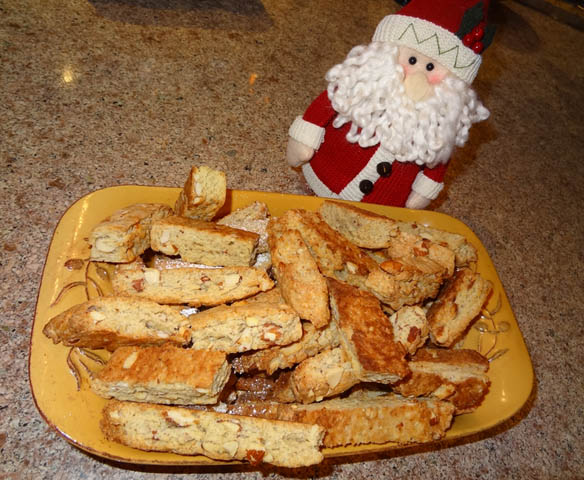
L’altro giorno ho fatto una scoperta illuminante mentre facevo i cantucci fatti in casa. Cantucci sono i biscotti di mandorle d’origine toscano fatti di cinque ingredienti semplici. Cosa potrebbe andare storta? Fidatevi di me. Ho trovato un modo per fare un casino in cucina. Sembra che non tutti i lieviti di cottura siano fatti uguali!
The other day I made an enlightening discovery while I was making homemade cantucci. Cantucci are the almond cookies, originally from Tuscany made of five simple ingredients. What could possibly go wrong? Trust me. I found a way to make a mess in the kitchen. It seems that not all baking rising agents are made the same!
La mia amica ed io stavamo seguendo una ricetta di sua nonna. Naturalmente la ricetta è stata scritta in italiano. Ecco la ricetta:
My friend and I were following her grandmother’s recipe. Naturally the recipe was written in Italian. Here is the recipe:
Biscotti con le mandorle
500gr farina 00 (500 gr Flour)
4 uova (4 eggs)
200gr zucchero (200 gr sugar)
100 gr olio (100 gr oil)
1 bustina di lievito (1 packet of yeast…or so I thought!)
Mescolare uova, zucchero,olio . Aggiungere lievito e farina. Tritare le mandorle e amalgamare con il resto dell’ impasto. Fare dei rotoli (tipo salamino) mettere in forno (già scaldato a 180°) fino a quando diventano dorati. Toglierli dal forno, affettarli con dimensione di circa 1 cm e infornarli nuovamente per circa 5 minuti.
Mix the eggs, sugar and oil. Add the yeast and the flour. Mince the almonds and add to the dough. Roll into two balls (like salami) and put in the oven (heated to 375 degrees) until they have turned golden (about 10-15 minutes). Remove from the oven and cut into slices about 1cm in dimension. Put back into the oven to continue to brown (about 5 more minutes)
Allora, quando ho letto la lista degli ingredienti e ho visto l’ultimo – “ 1 bustina di lievito” naturalmente ho tradotto come questo:
Now, when I read the list of ingredients and I saw the last one “1 package of yeast” naturally I translated it like this:
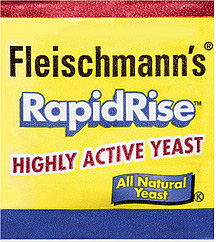
Attenzione! È importante conoscere i vostri lieviti. Esiste anche questo tipo di lievito:
Watch out! It is important to know your rising agents! There also exists this type:
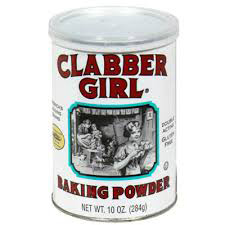
Il primo si chiama “Lievito di birra” che si usa per la pasta lievita come pane, pizza, bomboloni, zeppole. L’altro è “Lievito chimico in polvere” che si usa per i dolci per i quali non dive lasciare riposare l’impasto. È chimico e istantaneo. Tutti e due servono a fare lievitare un impasto. Producendo un gas all’interno dell’impasto così da gonfiarlo, sollevarlo, aumentarne il volume, cosicché durante o dopo la cottura il pane o la torta risulteranno fragranti e ben alveolati, morbidi da addentare e ovviamente da gustare. La differenza tra lievito di birra ed il lievito chimico sta quindi nel modo in cui questa produzione di gas avviene.
The first is called “Lievito di birra” – yeast and is used in the making of bread, pizza, bomboloni and zeppole. The other is “Lievito chimico in polvere – baking powder which is used for sweets and things that don’t need to let set to rise. It is a chemical and therefore works quickly. Both serve to make the dough rise. They produce an internal gas that makes the dough swell, rise, and increase in size so that during and after the cooking our bread and pasta area is fragrant, soft, and tasty. The difference between the two is in how the production of the gas takes effect.
In America l’unica bustina di lievito che abbiamo sono quelle di lievito di birra. Il lievito in polvere è venduto in piccole lattine. Quindi naturalmente ho pensato che quello che ci servisse era la bustina di Felishman. Però in Italia c’è questa marca famosa di lievito in polvere: “Lievito Paneangeli“ che viene venduta in una bustina.
In America, the only rising agent sold in a little envelope is that of the sort of Fleishman’s yeast. Our baking powder is sold in small canisters. So, naturally, I assumed that we needed a pack of Fleishman’s. But in Italy, there is a famous brand of baking powder called Paneangeli that is sold in a small envelope.
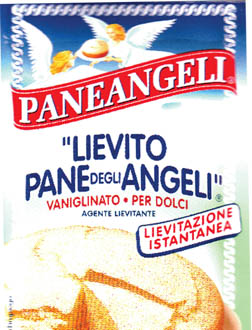
Mentre stavamo preparando i biscotti appena la mia amica ha aperto la bustina di lievito di Fleishcman’s ha fatto una faccia strana.
As we were preparing the cookies as soon as my friend opened the packet of Fleischman’s yeast she made a strange face.
“Cosa c’è che non va?” le ho chiesto.
“Is something the matter”? I asked her
“Boh, non lo so. Sembra un po’ strana!” mi ha risposto. “Non è bianco. In Italia è bianco!”
“Well, I don’t know, it seems a bit weird!” she replied to me. “It isn’t white. In Italy it is white!”
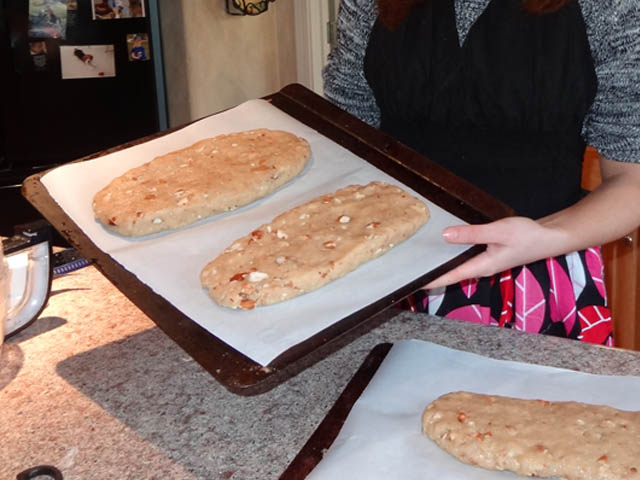
Questo avrebbe dovuto essere un’indicazione che qualcosa stava per andare storta, ma abbiamo continuato felicemente tritando le mandorle e impastando la pasta. Poi seguendo la ricetta abbiamo messo i ben formati rotoli nel forno. Direttamente dal forno i biscotti hanno avuto un aspetto un po’ particolare e un aroma che non era affatto dolce, ma anzi sapeva quasi un po’ di pesce. Non era il risultato che volevamo. A quel punto e essendo un po’ curioso abbiamo deciso di controllare attentamente i nostri ingredienti. Abbiamo ristretto a due cose: il fatto che abbiamo usato l’olio di canola (probabilmente non la scelta migliorare) o forse era la lievitazione. Usando il nostro fidato amico “google” abbiamo scoperto tante cose interessanti su del lievito e le differenze nel modo in cui sono confezionate in America e in Italia.
This should have been a red flag, but we continued happily chopping almonds and kneading the dough. Then following the recipe we put nicely formed rolls into the oven. Right after baking, the cookies had an interesting appearance and an aroma that wasn’t all that sweet, but rather it smelled a bit fishy. Not exactly the results we were going for! We narrowed it to two things: the fact we had used canola oil (probably not the best choice of oils!) or maybe it was the leavening. Using our trusty friend “google” we discovered many interesting things about yeast and baking powder and the way things are packaged in America and Italy.
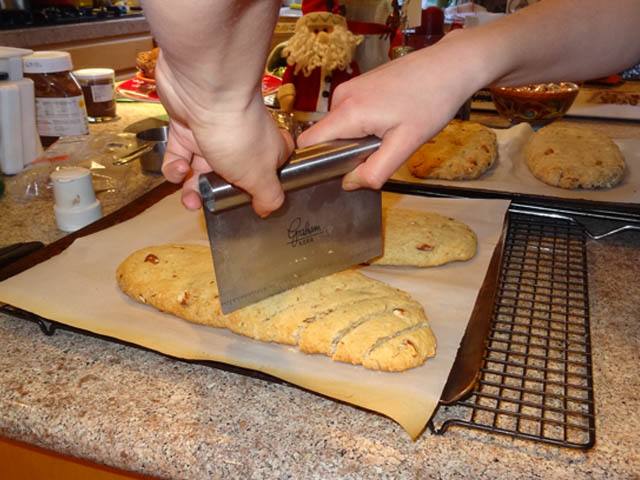
Va be! È stata un’esperienza! Ma sbagliando s’impara. Para che l’espressione non valga solo per la lingua, ma anche per la cottura! La prossima volta faremo meglio e “risorgeremo” alla sfida!
Oh well! Chalk it up to experience! But making errors one learns. Apparently, that expression applies not to learning a language, but also to baking! Next time we will do better and will rise to challenge!
Avete fatto errore simili. Facci sapere! Domani…la ricetta per i baci fatti in casa.
Have you made a similar mistake? Let us know! Tomorrow the recipe for homemade Baci.
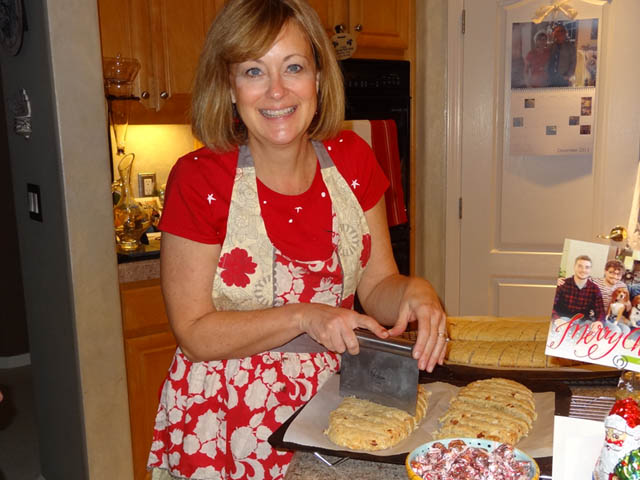
If you liked this post about sweet Italian treats you might like this one:
Confetti – Italian sugared almonds
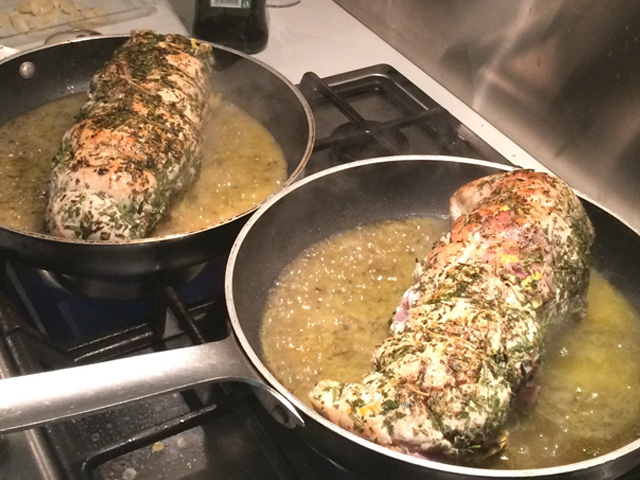


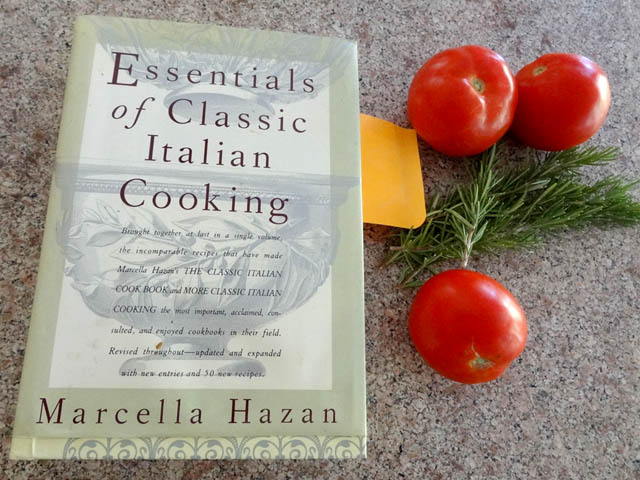

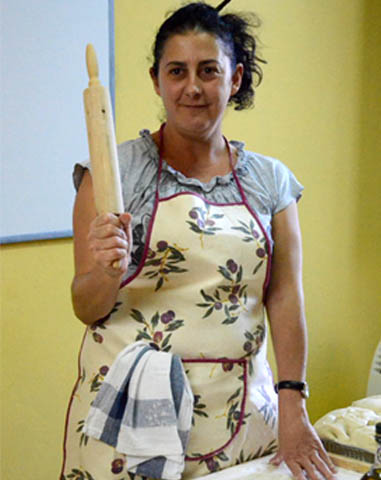





E il gusto era …… ????? Come il pesce?
No fortunatamente! l’odore ha passato. Ho parlato con la mia amica Maria Luisa, una brava cuoca italiana. Mi ha detto che di solito si usa il lievito di birra per fare i pani ma è possibile usarlo per i dolci. Mi ha confermato che c’è un odore leggero di pesce quando i biscotti escono subito dal forno…ma passa dopo alcune ore e i biscotti si sono raffreddati.
Stasera alla festa degli amici italiani tutti hanno mangiato i cantucci e hanno pensato che fossero buoni!
Buono! 😉
il signor Shakespeare ha detto [ma in inglese]: “all’s well that ends well”…io non posso tradurre la frase! cara, Melissa, mi piace molto il tuo blog. e` rinfrescante! amore, baci e abbraci a tutti gl’italani & anche loro chi volgliono essere! buon natale a tutti! [non vedere I miei sbagli.]
Quella era una storia divertente.
Quando io uso l’agente di lievito nei miei biscotti di mandorla io uso Ammonio Carbonato Polvere (molto difficile trovare). L’ammonio cuoce fuori completamente dal forno e va via. E se la casa non è ventilato bene, poi se c’è chiunque là che era svenuto (se ci era alcuni) sarà rianimato. È come “smelling salts” avevano aperto nella casa. Ovviamente non lo uso spesso. La ragione che ho cominciato ad usare questo era perché ha prodotto un biscotto più duro.